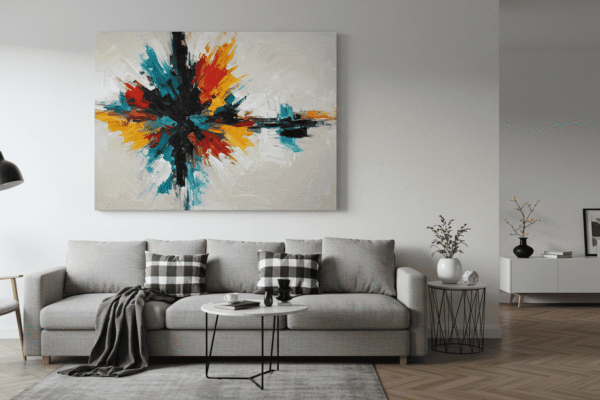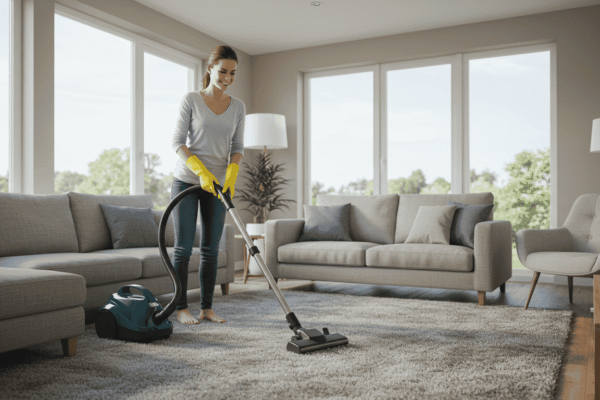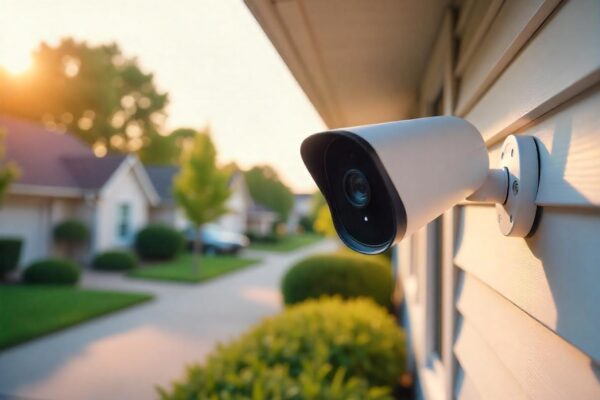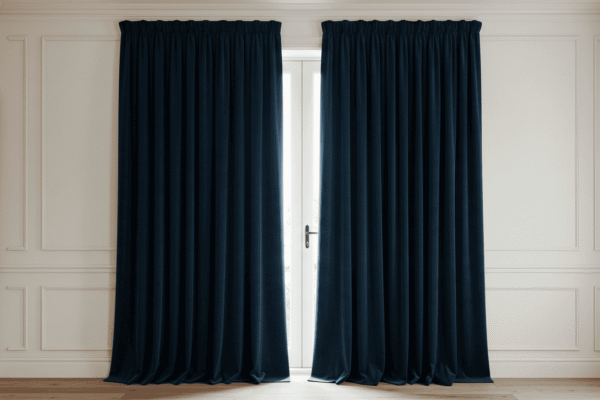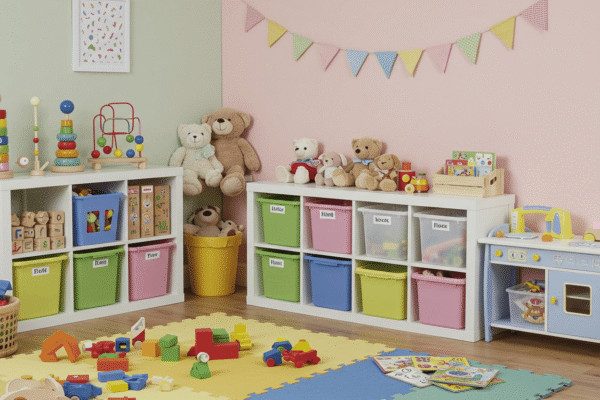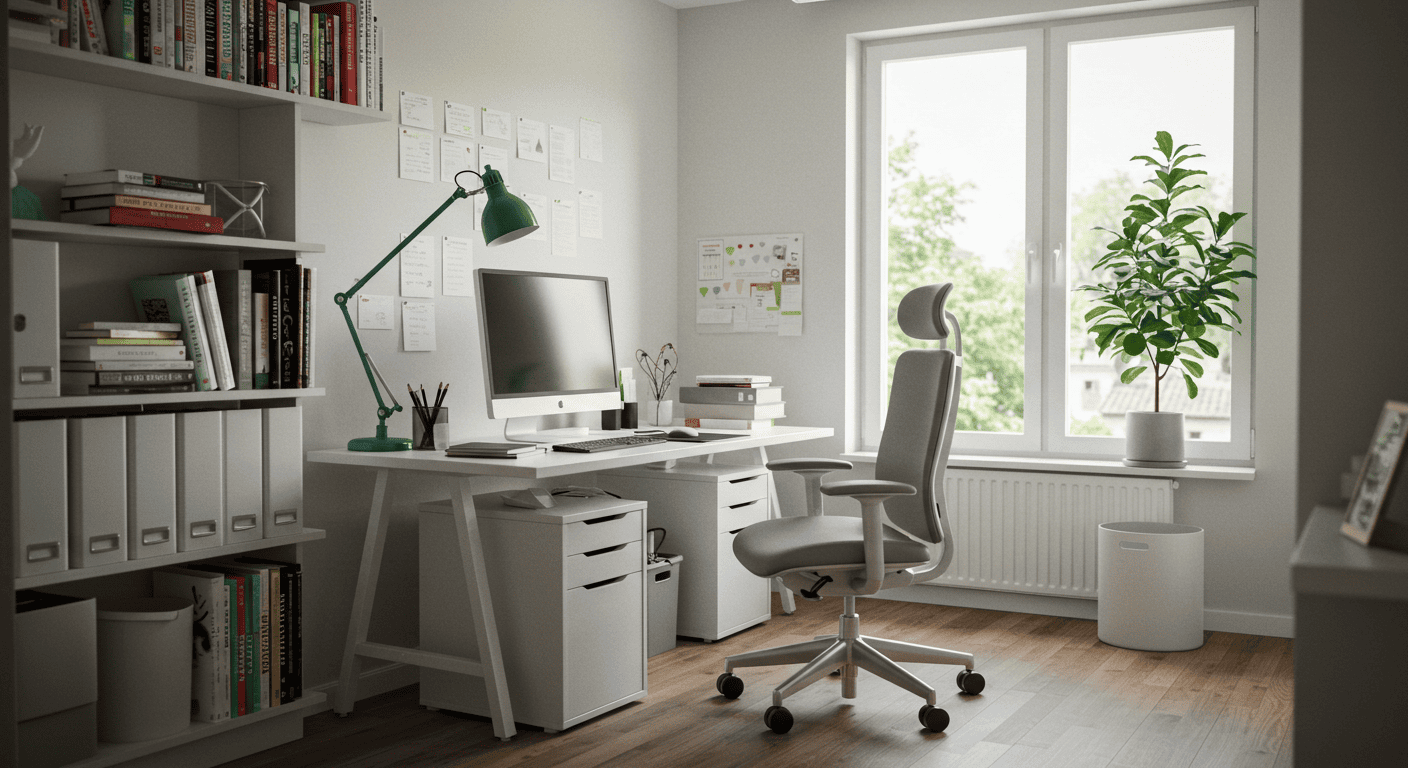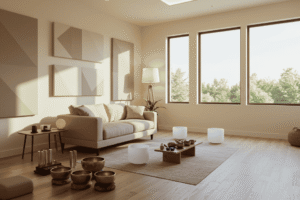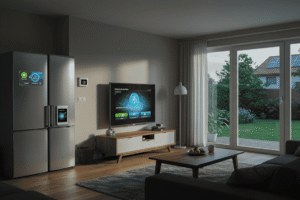Home office setup has become a game-changer for freelancers and entrepreneurs looking to boost productivity without breaking the bank. Creating an affordable home office setup doesn’t mean sacrificing comfort or style—it’s about smart planning, choosing the right furniture, and using clever hacks to make your workspace both functional and inspiring. In this guide, you’ll discover practical home office setup tips designed to help you build a budget-friendly workspace that keeps you focused, organized, and motivated every day.
Why an Affordable Home Office Setup Matters for Freelancers and Entrepreneurs
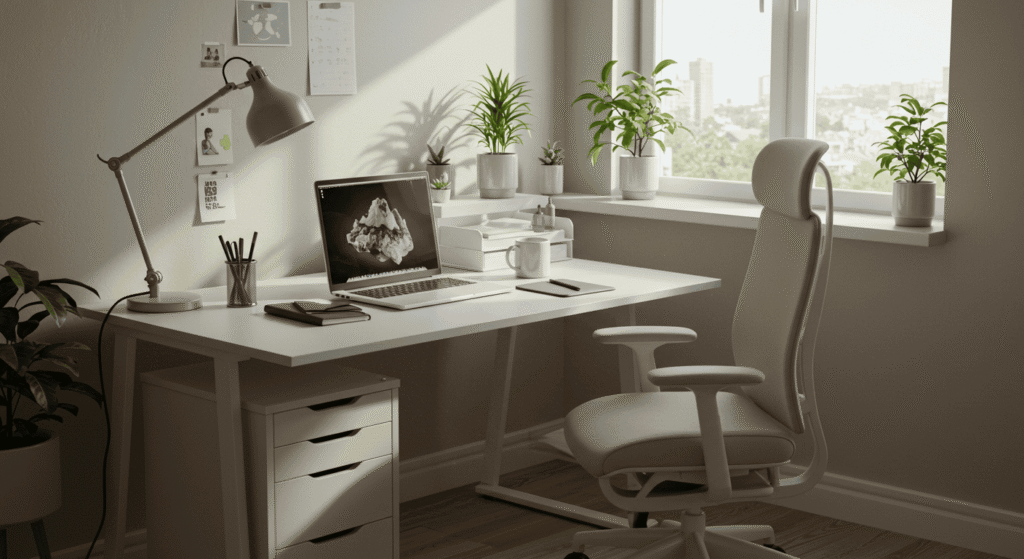
Setting up a productive workspace at home is essential for freelancers and entrepreneurs who want to stay focused, organized, and motivated. An affordable home office setup allows you to create an environment tailored to your work style without overspending. When done right, your workspace can significantly influence your daily performance, reduce stress, and help maintain a healthy work-life balance. Investing time and effort into designing a budget-friendly, functional office can pay off in increased efficiency and overall well-being.
The Impact of Workspace on Productivity and Well-being
A well-designed home office setup goes beyond just aesthetics. It plays a vital role in improving your focus and creativity. When your workspace is comfortable and free from distractions, your brain can enter a flow state more easily, allowing for deeper concentration. Proper ergonomics, such as the right chair height and desk arrangement, reduce physical strain, which helps prevent fatigue and discomfort during long work hours. Additionally, an organized and inviting environment encourages a positive mindset, boosting motivation and fostering innovative thinking. By optimizing your space, you are setting yourself up for daily success.
Common Challenges in Setting Up on a Budget
Creating an effective home office setup on a tight budget comes with its own set of challenges. Many freelancers and entrepreneurs face limited space, especially when working in small apartments or shared rooms. Finding affordable furniture and accessories that meet ergonomic standards can be difficult, which sometimes leads to compromising comfort or style. Budget constraints often force people to prioritize immediate needs over long-term benefits, resulting in setups that may not support productivity. Additionally, distractions from family members, household noise, or clutter can further hinder focus. Recognizing these challenges is the first step toward finding smart, affordable solutions that work for your unique situation.
Quick Self-Assessment: What Do You Really Need?
Before diving into purchases or rearranging your space, it’s important to evaluate your actual needs. This helps you prioritize what is essential and avoid unnecessary expenses. Use the checklist below to identify your home office must-haves and nice-to-haves:
| Priority | Item | Notes |
|---|---|---|
| High | Desk | Must fit your work equipment |
| High | Comfortable ergonomic chair | Supports good posture |
| Medium | Adequate lighting | Natural or desk lamp |
| Medium | Storage solutions | Shelves, drawers, or organizers |
| Low | Decorative elements | Plants, art, or personal items |
| Low | Tech accessories | Monitor stand, keyboard, mouse |
Planning Your Home Office Setup: Space and Budget Considerations
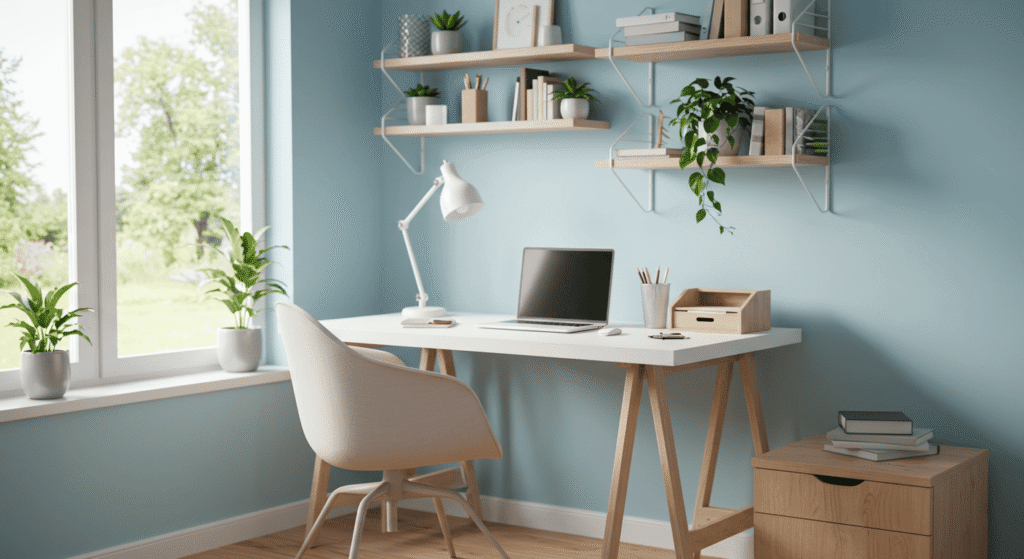
Creating an efficient home office setup starts with thoughtful planning. Understanding your available space and how much you can realistically spend helps you design a workspace that fits both your needs and your budget. Whether you’re working with a small nook or a dedicated room, smart planning ensures your setup supports productivity without unnecessary expenses or clutter.
Assessing Your Available Space and Layout Options
When planning your home office setup, the size and layout of your space are key factors. For small spaces, consider multifunctional furniture such as foldable desks or wall-mounted shelves to save floor area. If your workspace doubles as a living area or guest room, choose compact, portable solutions that can be easily stored when not in use. Maximizing natural light is another important tip: position your desk near windows to boost mood and reduce eye strain. Use light-colored walls and reflective surfaces to enhance brightness and make the space feel larger. Thoughtful arrangement and efficient use of vertical space can transform even the smallest corner into a productive work zone.
Setting a Realistic Budget Without Sacrificing Quality
Budgeting is crucial for an affordable home office setup. Start by listing all necessary items—desk, chair, lighting, and tech accessories—and assign priority based on comfort and functionality. Allocate the largest portion of your budget to ergonomic seating and a quality desk, as these impact your health and productivity the most. For tech, focus on essential tools that support your workflow but avoid overspending on fancy gadgets you don’t need. Accessories like organizers and lighting can often be found affordably or improvised with DIY ideas. Keep a small buffer for unexpected expenses or upgrades. This approach helps you balance cost with long-term value.
DIY vs. Buying Pre-made: Pros and Cons
Choosing between DIY projects and pre-made furniture depends on your skills, time, and style preferences. DIY setups allow for customization and can save money by repurposing existing items like old tables, crates, or shelving. Creative hacks—such as turning a sturdy door into a desk or using stackable crates for storage—can add character while keeping costs low. However, DIY requires time, effort, and sometimes basic tools, which not everyone has. Pre-made furniture offers convenience, warranties, and professional finishes but often comes at a higher price. Combining both approaches—buying key ergonomic pieces and DIY-ing the rest—can be an ideal way to build an affordable, personalized home office setup.
Essential Furniture for an Affordable Home Office Setup

Finding the right furniture is at the heart of an effective home office setup. It’s important to choose pieces that balance comfort, functionality, and affordability. The right desk and chair can boost your productivity and prevent discomfort, while multi-functional furniture helps maximize limited space without extra cost.
Choosing the Right Desk: Size, Shape, and Functionality
Selecting the ideal desk depends on your work habits, space, and equipment. To help you decide, here’s a quick comparison table of common desk types, their pros, cons, and best use cases:
| Desk Type | Pros | Cons | Ideal Use Case |
|---|---|---|---|
| Standard Rectangular | Simple, affordable, fits most spaces | Takes up more floor space | Traditional setups, ample space |
| Corner/L-Shaped | Maximizes corner space, multitasking | Harder to move, may require more | Small rooms, multiple monitors |
| Wall-Mounted Desk | Saves floor space, sleek design | Limited surface area | Very small spaces, minimalist |
| Foldable/Portable | Easy to store and move, flexible use | Less sturdy, limited workspace | Temporary setups, shared rooms |
| Standing Desk | Encourages movement, ergonomic | Typically pricier | Health-conscious users, active work |
Choosing a desk that fits your workflow and space constraints sets the foundation for your affordable home office setup.
Affordable Ergonomic Seating Solutions
Investing in a good chair is crucial for posture and comfort. Even on a budget, you can find or create seating that supports your back and encourages healthy sitting habits. Look for chairs with adjustable height and lumbar support to prevent strain. If buying new isn’t an option, consider adding affordable cushions or back supports to improve existing chairs. Remember, a chair that supports correct posture helps you stay productive longer and reduces the risk of pain or injury.
Multi-Functional Furniture Ideas
When space or budget is limited, multi-purpose furniture can be a lifesaver. Storage ottomans offer hidden space for supplies while doubling as seating. Foldable desks or tables can be tucked away when not in use, freeing up room for other activities. Wall-mounted shelves keep clutter off your desk and make use of vertical space. These versatile options make your home office setup efficient and organized without requiring a large investment.
Must-Have Accessories and Tech Tools on a Budget
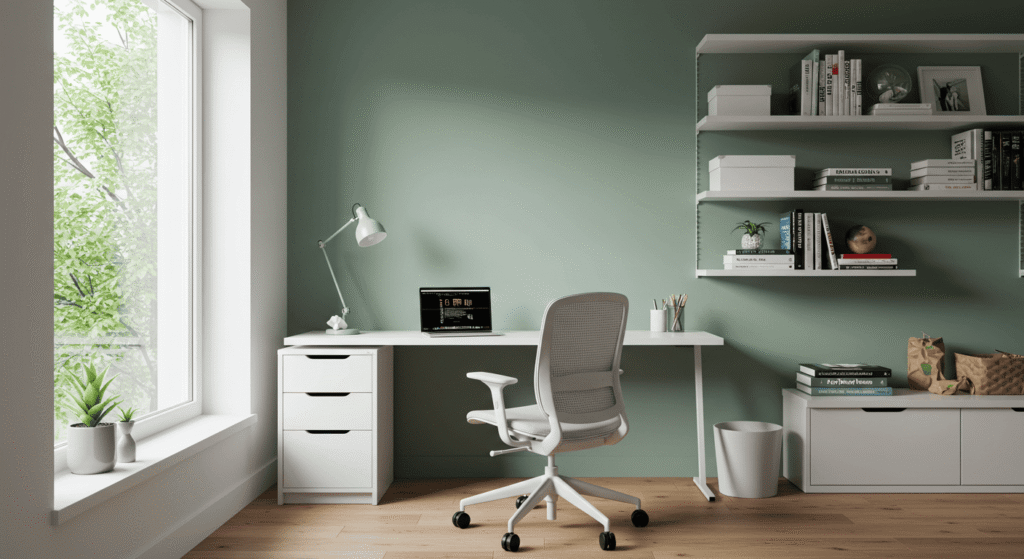
Adding the right accessories and tech tools can transform your home office setup from basic to highly functional, without requiring a big budget. These small but impactful additions improve comfort, organization, and efficiency, helping you work smarter every day.
Practical Accessories to Enhance Comfort and Productivity
Investing in a few practical accessories can make a noticeable difference in your daily workflow. Cable organizers help keep cords untangled and your desk clutter-free, making it easier to focus. Monitor stands and laptop risers raise your screen to eye level, promoting better posture and reducing neck strain. These accessories don’t have to be expensive; simple DIY versions using sturdy books or inexpensive stands can work just as well. Prioritize items that improve ergonomics and organization to create a comfortable, distraction-free workspace.
Affordable Lighting Tips for a Healthy Workspace
Good lighting is often overlooked but is essential for maintaining energy and reducing eye fatigue. Maximize natural light by positioning your desk near windows and using light, sheer curtains to diffuse glare. Reflective surfaces, like mirrors or light-colored walls, help brighten the room. When natural light isn’t enough, opt for budget-friendly desk lamps with adjustable brightness and color temperature settings. Warm light tones reduce strain during long work sessions, while brighter, cooler light boosts alertness. Even inexpensive lamps with LED bulbs can create a healthier, more inviting work environment.
Tech Essentials for Remote Work Success
Remote work demands reliable, user-friendly tech tools that support communication, task management, and focus. At a minimum, ensure you have a dependable internet connection and a functional headset or earbuds for clear calls. Use free or low-cost apps for video conferencing, project tracking, and time management to stay organized and connected. Simple productivity tools, like website blockers or focus timers, help minimize distractions and keep your workflow on track. Investing in these basic tech essentials can significantly improve your remote work experience without stretching your budget.
Smart Organization Hacks to Keep Your Workspace Clutter-Free
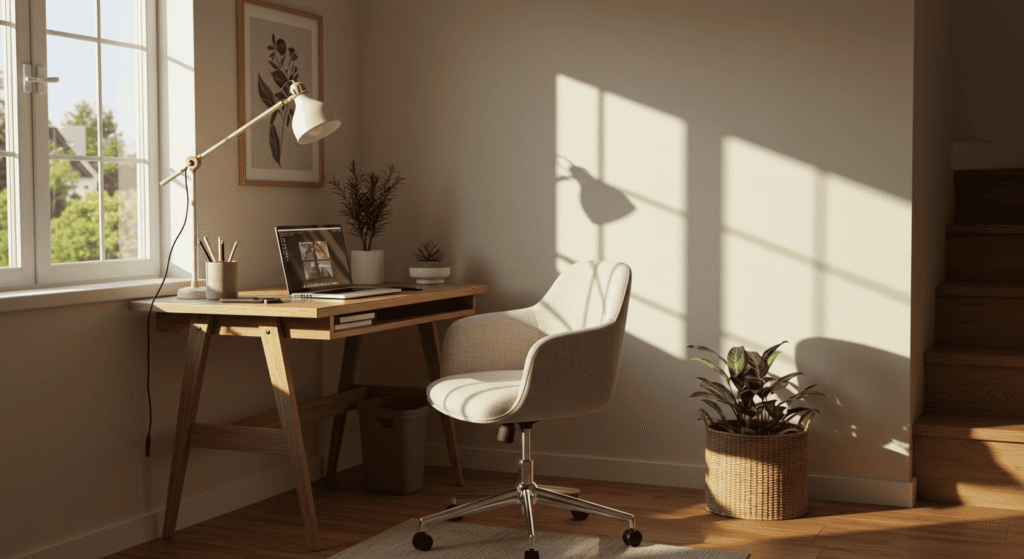
A clutter-free home office setup is essential for maintaining focus and reducing stress. Smart organization doesn’t have to be complicated or costly — simple hacks and daily habits can keep your workspace tidy and efficient, no matter the size.
Easy Storage Solutions for Small Spaces
When working with limited space, maximizing storage is key. Utilize vertical space by installing shelves or pegboards to keep supplies within reach but off your desk. Under-desk baskets offer hidden storage for papers, cables, or accessories, freeing up surface area. Drawer organizers help compartmentalize small items like pens, chargers, and notepads, making everything easier to find. These solutions keep your essentials organized and accessible without crowding your workspace.
Daily Habits That Prevent Clutter
Maintaining a clean workspace is easier with quick, consistent habits. Spend just five minutes at the end of each day tidying your desk, filing papers, and putting away supplies. Avoid piling up tasks by dealing with mail and documents immediately instead of letting them accumulate. Regularly declutter and donate or recycle items you no longer need. These simple routines prevent clutter from building up and keep your home office setup inviting and productive.
Visual Guide: Home Office Organization Ideas Table
| Storage Option | Cost | Size | Ease of Use | Best For |
|---|---|---|---|---|
| Wall-mounted Shelves | Low to Medium | Takes wall space | Easy | Books, decor, frequently used items |
| Under-desk Baskets | Low | Compact | Easy | Papers, cables, small accessories |
| Drawer Organizers | Low | Fits drawers | Very easy | Small office supplies |
| Stackable Storage Bins | Low to Medium | Flexible | Moderate | Seasonal items, extra supplies |
| Pegboards | Low | Wall space | Moderate | Tools, headphones, cables |
This table helps you weigh your options and choose the best storage solutions for your affordable home office setup, tailored to your space and budget.
Boosting Productivity and Comfort: Ergonomics and Environment
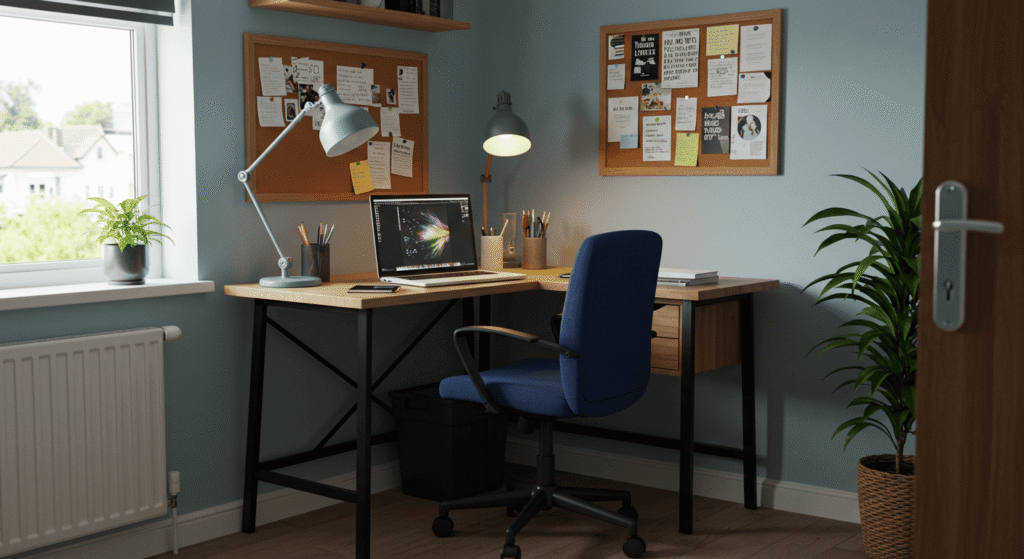
An affordable home office setup isn’t just about furniture and tech — optimizing ergonomics and your environment plays a crucial role in enhancing productivity and overall well-being. Small adjustments and thoughtful additions can create a workspace that feels comfortable and inspires focus throughout your workday.
Setting Up Your Desk Ergonomically
Proper ergonomic setup prevents strain and fatigue, helping you stay productive longer. Position your screen so the top edge is at or just below eye level, keeping your neck in a neutral position. Your keyboard should be placed so your elbows are at about a 90-degree angle and wrists remain straight. Adjust your chair height to allow feet to rest flat on the floor or on a footrest, maintaining good posture. These small tweaks reduce discomfort and support long-term health without expensive equipment.
The Role of Plants and Personal Touches
Adding a touch of greenery can boost mood and air quality, making your home office setup more inviting. Low-maintenance plants like succulents or snake plants require minimal care but deliver noticeable benefits. Beyond plants, personal touches such as artwork, photos, or a favorite mug can create a workspace that feels uniquely yours — just be mindful to avoid clutter. A balanced mix of personality and order makes your office a place you enjoy spending time in, which naturally enhances focus and creativity.
Managing Noise and Distractions in Your Setup
Noise and interruptions can derail your concentration, but soundproofing doesn’t have to be costly. Use inexpensive solutions like heavy curtains, rugs, or draft stoppers to absorb sound. White noise machines or smartphone apps can mask distracting background noises. Establishing clear boundaries with family or roommates and setting specific work hours helps minimize interruptions. Combining these strategies creates a quieter, more controlled environment where focus and productivity thrive.
Creative Decor Ideas That Won’t Break the Bank
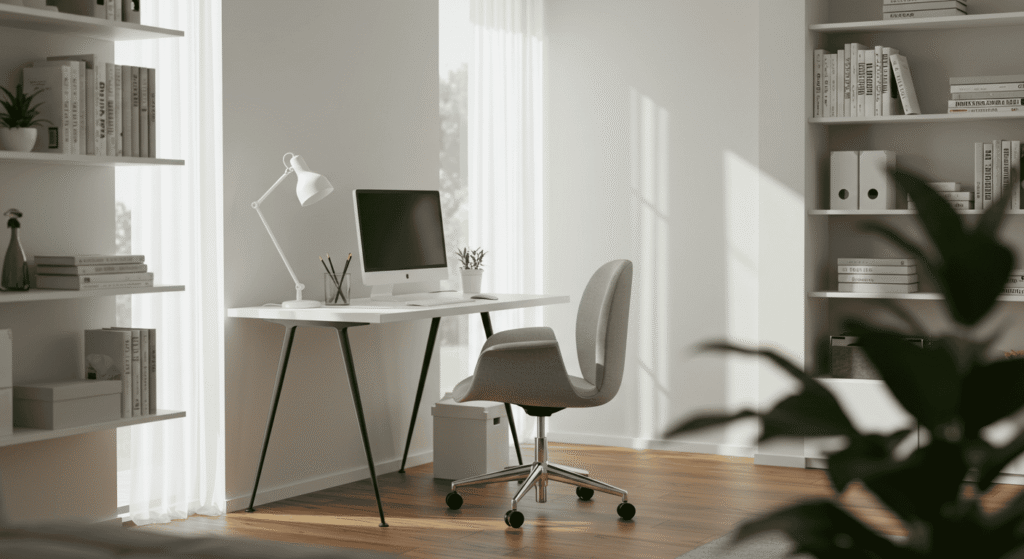
Your home office setup should inspire creativity and make you look forward to working each day. Decorating doesn’t mean splurging — with a little imagination, you can create a vibrant and motivating workspace that fits your budget and personality.
Using Colors and Textures to Energize Your Workspace
Colors have a powerful psychological impact on mood and productivity. For instance, blues and greens promote calm and focus, while pops of yellow or orange spark energy and creativity. You don’t need to repaint walls to benefit — adding colorful cushions, rugs, or textured throws can make a big difference. Mixing textures like soft fabrics with natural wood or metal accents adds visual interest and comfort without cluttering your space.
Budget-Friendly Wall Art and DIY Inspiration Boards
Personalizing your walls is an easy way to inject personality and motivation into your workspace. Use inexpensive prints or photos that inspire you, or create a DIY inspiration board with notes, quotes, and images that keep you motivated. Corkboards, magnetic boards, or even string with clips work well for rotating ideas and keeping important reminders visible. This dynamic decor keeps your workspace fresh and aligned with your goals.
Incorporating Functional Decor Elements
Combine beauty and practicality with decor that also serves a purpose. Decorative storage jars can hold pens, paper clips, or other small items, keeping clutter out of sight. Artistic organizers and trays not only look good but streamline your workflow by making essentials easy to find. Accent lighting—like fairy lights or small lamps—adds warmth and ambiance, improving both your mood and workspace functionality.
Maintenance and Upgrading Your Home Office Over Time
Creating an affordable home office setup is just the beginning. Regular maintenance and thoughtful upgrades ensure your workspace stays functional, comfortable, and inspiring as your needs evolve.
Simple Daily and Weekly Cleaning Routines
Keeping your workspace clean boosts productivity and comfort. A quick daily routine might include wiping down surfaces, organizing your desk, and putting away loose items. Weekly tasks could involve dusting electronics, vacuuming floors, and decluttering drawers or shelves. Use this simple checklist to stay on track:
| Task | Daily | Weekly |
|---|---|---|
| Wipe down desk surface | ✓ | |
| Organize papers/tools | ✓ | |
| Dust electronics | ✓ | |
| Vacuum/sweep floor | ✓ | |
| Declutter drawers | ✓ |
Consistent upkeep keeps your home office setup fresh, welcoming, and ready for productive work sessions.
When and How to Upgrade Your Setup Affordably
Knowing when to upgrade prevents frustration and supports your growing work demands. Signs it’s time include worn-out furniture causing discomfort, slow or outdated tech hindering tasks, or lack of storage leading to clutter. Plan upgrades by prioritizing essential items first — like an ergonomic chair or faster internet. Set aside a small monthly budget or watch for sales to avoid overspending. Gradual upgrades ensure your workspace evolves without breaking the bank.
Long-Term Tips for Sustainable Workspace Growth
As your freelancing career or business expands, your home office setup should grow with you. Consider modular furniture that can be reconfigured or added to over time. Invest in multi-purpose items that serve multiple functions to save space. Regularly reassess your workflow to identify new needs or inefficiencies. Sustainability also means being mindful of waste — donate or recycle old equipment instead of discarding. Thoughtful growth makes your workspace adaptable, efficient, and ready for future success.
Creating Your Ideal Affordable Home Office Setup for Lasting Success
An affordable home office setup is more than just a budget-friendly arrangement — it’s the foundation for your productivity, creativity, and well-being as a freelancer or entrepreneur. By thoughtfully planning your space, choosing the right furniture and accessories, staying organized, and maintaining ergonomic comfort, you can build a workspace that supports your goals without overspending. Remember, small daily habits and gradual upgrades keep your office fresh and efficient over time. With these practical tips, you’re well on your way to creating a home office that inspires success every day.

